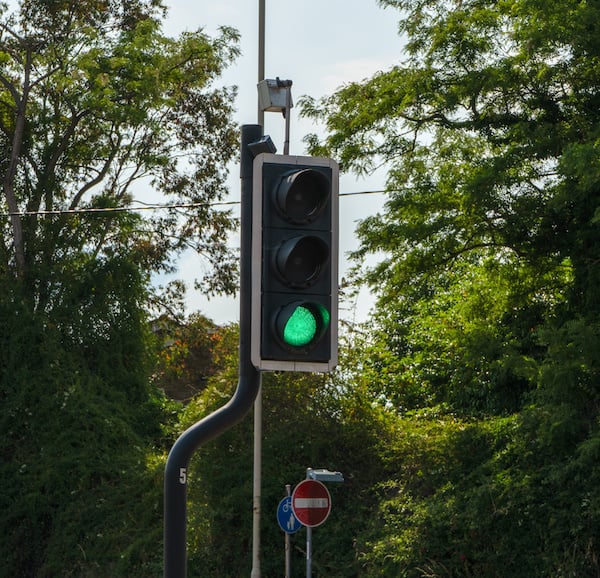
- Anti-lock braking system (ABS)
- Adaptive cruise control (ACC)
- Electronic stability control (ESC)
Suspension systems
A hydraulic suspension system uses hydraulic fluid and multiple dampers to help control the motion of the car. Rather than having springs, the hydraulic system allows the car to move up and down in a smooth, yet firm manner.
Another positive to the hydraulic suspension system includes response time. Hydraulic suspensions demonstrate faster reactions compared to air braking suspension systems, ensuring rapid adjustments to changing road conditions while enhancing overall vehicle stability and control.
Traffic management
Hydraulics are used in various areas of traffic management. A few examples include the following: 
- Road barriers: Hydraulics can be found in areas, such as toll booths and railroad crossings. These barriers can easily be raised and lowered at fast paces using hydraulics. Not only do these barriers help keep people safe and make traffic come to a stop, but they also enhance security.
- Traffic signals: Hydraulics help traffic signals function by ensuring precise operation, further contributing to the efficiency and safety of modern roadways.
- Road signs: Due to the heavy weight of large, illuminated road signs, a hydraulic lift is commonly required to make height adjustments for these signs.
Road maintenance and equipment
Heavy machinery used in road construction relies on hydraulic systems. Equipment like excavators, compactors, wheeled dozers, pavers and drum rollers frequently use hydraulics in constructing roadways.
Additionally, various types of machines help keep the roads in good shape all year long. For example, snowplows, vital for clearing winter snow, depend on hydraulic systems for mobility, braking and precise elevation and descent of the plow blade.

Conclusion
To ensure a safe and efficient environment, the U.K. has implemented the use of hydraulics in its road infrastructure. Not only are hydraulic systems used to make and maintain roadways, but you can find hydraulic systems in your vehicles, as well. Since the introduction of hydraulics, vehicle collisions and accidents have significantly decreased on roadways in the U.K., continuously proving how hydraulics are beneficial in areas we often don’t recognize.
Sources include:

